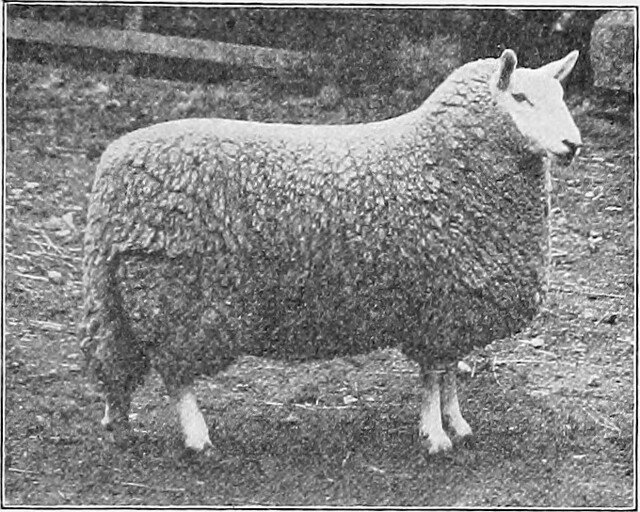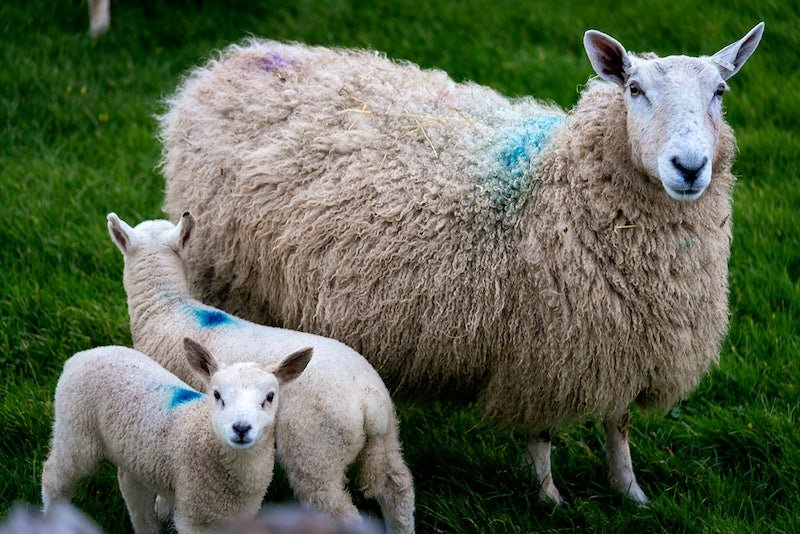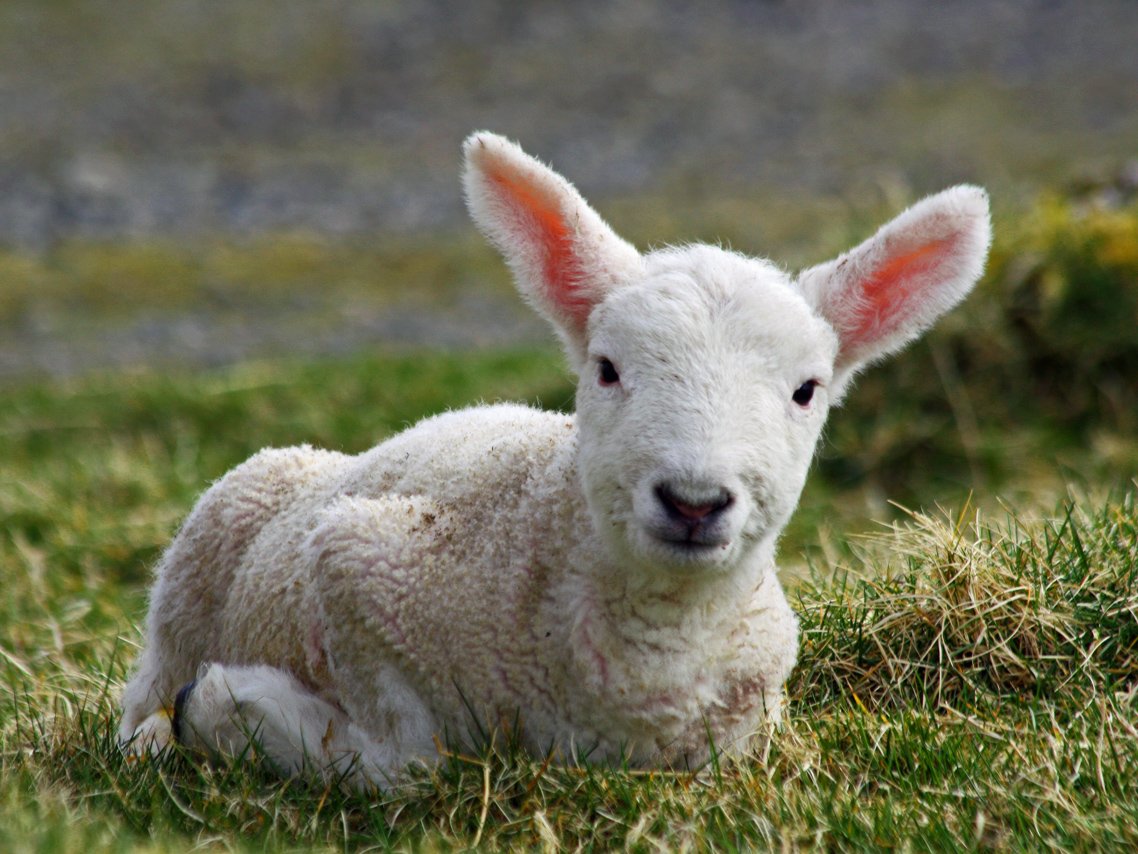Everything You Need to Know About the Cheviot Sheep Breed
Cheviot sheep are a unique breed of sheep that hail from the border between England and Scotland. They are cold hardy, and bred to withstand the harshest conditions. As natural foragers, they can live off the land, regardless of the conditions.
The Cheviot breed is straightforward to care for, requiring very little from you. A simple three-sided barn and a moderately supplemented diet will have them at their peak health. Because they have no health problems, you’ll have a stress-free experience raising them.
This article will cover all the traits, characteristics, and benefits of raising and breeding Cheviot sheep. It will also explain any disadvantages. Read on for everything you ever wanted to know about this unique breed.
**J&R Pierce Family Farm is a participant in the Amazon Services LLC Associates Program, an affiliate advertising program designed to allow sites to earn advertising fees by linking to products on Amazon. I often link to Amazon when recommending certain products, and if you choose to purchase, I may earn a small percentage of the sale. It costs you nothing extra, and all recommended products are ones that I personally vouch for.**
What is Unique About Cheviot Sheep?
The Cheviot sheep is a unique breed with several characteristics that set it apart from other sheep. These characteristics include the following:
Require less husbandry
Have fewer lambing problems
Less likely to experience foot rot
Worm resistant
Do not suffer from wool blindness
Wool has a helical crimp
You can find more introductory information about the Cheviot sheep in this video:
Is a Cheviot a Meat or Wool Breed?
The Cheviot is highly prized for both its meat and wool, making it a dual-purpose breed. The wool this breed offers is known for its special helical crimp, which adds resilience and durability. Because of this, it is often used in blends to make higher-quality products.
This wool is highly sought after because of its fineness and length. It is much easier to spin and combine.
The meat of the Cheviot is known for its mild flavor, generally sold as mutton. Additionally, the meat and fleece are both very low in grease, making them highly appealing. This breed is generally smaller than others; however, the meat quality is exceptional.
With two avenues for profits, the Cheviot sheep is an excellent choice for your farming operation. Whether you want to run a meat or fleece operation, you can produce high-quality products in either situation.
History of the Cheviot Sheep Breed
The Cheviot breed is originally from the Cheviot Hills area between Scotland and England. This inhospitable strip of land shaped the breed into what it is today, making it alert and wary, ready for anything.
Historical records illustrate that despite the conditions of the Cheviot Hills, shepherds did not provide housing or other forms of protection for their Cheviot sheep. Instead, the animals were left to fend for themselves even in winter, digging up what resources they could.
There were even reports of catastrophic losses during extremely harsh winters. One such loss reported 20,000 sheep across the area being reduced to just over 20 total between two farms.
Several shepherds of the time recorded details that their Cheviots seemed to be aware of pending weather, as they would seek what shelter they could find before the first cloud came into the sky.
The result of this lifestyle has produced the Cheviot sheep of today. They are constantly wary, avoid group grazing, and are experts at rustling up hidden food.
In 1944, the first North Country Cheviots were imported to North America. They were imported to MacDonald College in Quebec as a gift from breeders in Scotland to the college. The breed gained recognition throughout Canada, and importation began into the US.
Cheviot Sheep Breed Characteristics
Cheviot sheep are easily recognized for their distinctive white faces. Additionally, they are hairless on their legs and heads, which are hornless. Their ears stand out much in the way of a rabbit’s.
Their coloring is primarily white. It is typical for ewes and rams to both be polled. Rams generally weigh between 72 and 90 kg, while ewes are typically between 55 and 72 kg.
This breed is extremely hardy, having proven itself in the harsh conditions of the Cheviot Hills. Additionally, it has demonstrated an ability to survive Australia’s harsh winters. The Cheviot sheep is also adept at foraging in hot summers when feed is limited.
They have hard black feet, which is an excellent characteristic of them. This feature makes them significantly less prone to suffering foot rot. In addition, they are highly resistant to worms and experience less fly strike.
The Cheviot sheep is extremely intelligent, which can pose a problem for the shepherd. This intelligence turns into situations of the sheep doing what it wants when it wants to do it. Additionally, they’re not very good at flocking, making them harder to herd.
How to Raise Cheviot Sheep
Cheviot sheep are one of the most straightforward breeds to raise. They require very little in the way of food and housing and face very few impacts from health issues. Raising these sheep will cost much less than other breeds and require much less input.
As a hardy breed, the Cheviot can withstand many harsh conditions, including having no shelter and being forced to forage for all its food. However, you will want to provide both to ensure your Cheviot sheep are at their peak condition.
While many sheep fall prey to various health problems, you’ll enjoy raising Cheviot sheep for their superior resistance to all health problems. Foot rot, wool blindness, and worms are not a problem for this breed, saving you money on expensive medical bills.
What to Feed Cheviot Sheep
The Cheviot sheep breed is a natural forager. It excels at the practice like most sheep; however, it is far superior to most breeds at digging up something good to eat. Because of this, its diet will consist mainly of nutrients found in the pasture.
Their diet should be supplemented with feed and hay if conditions are considerably harsh and the pasture is inaccessible. However, due to their hardiness, they can continue foraging in the winter, provided the snow does not hinder them.
Ideal Housing for Cheviot Sheep
Housing Cheviot sheep is one of the easier aspects of caring for this breed. As a hardy type of sheep, they don’t need much in the way of an enclosure. They’ll spend most of their time out grazing and foraging.
Because of this, you can supply them with a three-sided barn that will allow them to escape the rain. While it may not seem like much, this breed is used to the cold, harsh conditions of the border between England and Scotland.
Despite offering shelter, you may find they opt to not use it. However, it is still essential to provide it for those situations when the weather is overbearing, and they need a place to escape while waiting.
Common Health Issues with Cheviot Sheep
The Cheviot sheep breed is one of the best options for shepherds and hobbyists because it suffers from no known health problems. Its feet make it less likely to have foot rot. It is worm-resistant, requires less drenching, and is less susceptible to fly strike.
Overall, this breed is extremely easy to care for. The ewes breed seasonally and have a 90% success rate. This rate applies even in the harshest of conditions.
With so few problems, an increased ability to handle the toughest situations, and minimal requirements from you, the Cheviot sheep makes itself a prime candidate to add to the farm.
Breeding Cheviot Sheep
Breeding Cheviot sheep is nearly as straightforward as raising them. You won’t have to interact much unless the lamb is too large for the ewe to birth. In general, the Cheviot is an independent breed that takes care of itself and does not need interference from you.
They have a very strong mothering instinct that allows them to care for their young regardless of the conditions. Lambs are also quick to mature, reaching reproductive maturity within seven to nine months.
You’ll have another round of ewes ready for reproduction the following season because of the high maturation rate.
Are Cheviots Easy Lambing?
Many shepherds love raising Cheviots because of their easy lambing. These sheep generally require little to no interference during the birthing process unless the lamb is too large. Additionally, they often produce twins.
Twins and single-birthed lambs have demonstrated the same growth rates. The lambs quickly pick up the foraging patterns and become as efficient as their mothers. While the Cheviot is not raised for its milk production, the ewe has enough supply to care for her young.
Cheviot lambs are known for quick development following their births. They are up and around with no human coaxing. They need no help to begin nursing, and they even begin running around.
This behavior is unheard of for most sheep breeds. If you have raised other breeds, you know that most often, there is coaxing involved to get the sheep up and to a teat to nurse. The difference between an ordinary sheep and a Cheviot is truly amazing.
Cheviot Sheep Advantages and Disadvantages
There are many advantages to raising Cheviot sheep. The primary one is their hardiness to extreme conditions. They can survive and even thrive in the worst conditions imaginable.
All you need to provide is a simple three-sided barn to cover them in the event of precipitation or severe cold, allowing them to huddle together. Throughout any conditions, they’ll persevere, harvesting and foraging for whatever food they can find.
Because of this, you’ll save money on feed and housing. You also don’t have to interact with the sheep that often, even when they’re lambing. They were bred to be self-sufficient, which has carried over through the generations to today.
With the many resistances to health problems, you won’t have to worry about a lot of medical costs. Foot rot is a common problem among many sheep breeds, but the Cheviot sheep has hard black feet that prevent this from being an issue.
Additionally, they resist worms and are less prone to experiencing fly strike. Overall, this sheep breed is extremely beneficial to have because of its lack of health problems.
However, despite all these great benefits, there are a couple of disadvantages. The high level of intelligence in these sheep can result in recalcitrant behaviors. They will decide what they want to do and only do it when they want to do it.
Additionally, they are not group grazers, which means they will spread out through the pasture. This process can make rotational grazing extremely hard to manage without a creative fencing system installed. You may also find you have herding difficulties.
Where To Find Cheviot Sheep for Sale
You can purchase Cheviot sheep from a dealer or farmer. It is ideal to research the seller before finalizing any sale. You want to ensure that you purchase a high-quality stock that has been well cared for throughout its life.
You can use many resources to find the best seller, including attending livestock shows, browsing livestock sites, and searching for breeders online. Many have social media pages where you can view their information and see images of their sheep.
When you go to see the livestock firsthand, it’s best to request that your veterinarian do an evaluation. By doing this, you will know if the animals you intend to purchase are healthy and of the highest quality.
Additionally, you never want to buy animals without viewing them first. It is essential to have firsthand knowledge of their physical appearance and well-being.
Final Thoughts
Cheviot sheep are a unique breed of sheep that suffer from no known illnesses, making them an ideal option to raise and breed. Additionally, they are nearly entirely self-sufficient, feeding themselves from the pasture with little requirements of supplemental feed necessary.
They are a dual-purpose breed, allowing them to be raised for wool or meat. Their wool is prized for its helical crimp that adds to its durability. Its meat is mild and flavorful, making it an excellent choice.
The only downsides to this sheep breed are entirely behavioral. Their superior intelligence leads to bullish behavior where they do what they want. Additionally, they are not group grazers, making it harder to herd them.
What do you think? Will you raise Cheviots? Let us know in the comments!
Want to learn more about farming? Be sure to check out these featured articles!
Subscribe to our email newsletter for regular tips and tricks on homesteading and farming – wherever you are. You can also follow us on Instagram (@jrpiercefamilyfarm) and Pinterest (J&R Pierce Family Farm) for frequent updates. Happy homesteading!









